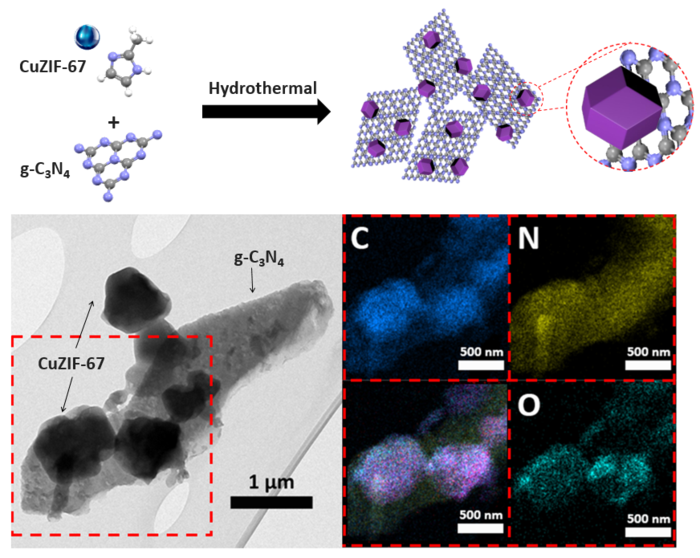Reviewed by Alex SmithApr 8 2022
Instead of lithium-ion batteries, zinc-air batteries, which generate electricity via a chemical reaction between oxygen in the atmosphere and zinc, are being considered next-generation candidates to meet the explosive demand for electric vehicles.
 Schematic preparation and TEM images with elemental distributions in the red rectangle marked area for CZ. Image Credit: Korea Institute of Science and Technology.
Schematic preparation and TEM images with elemental distributions in the red rectangle marked area for CZ. Image Credit: Korea Institute of Science and Technology.
They ideally meet all of the requirements for next-generation secondary batteries, including high energy density, low risk of explosion, environmental friendliness (no pollution) and low material costs (zinc and air, are obtained easily from nature).
The Korea Institute of Science and Technology (KIST, President Seok-Jin Yoon) reported that President Seok-Jin Yoon of the Korea Institute of Science and Technology (KIST) announced that investigators headed by Dr. Joong Kee Lee (Energy Storage Research Center) fabricated a technology to improve the electrochemical performance of zinc-air batteries.
These batteries utilized solar energy - a rising new research and development area in the secondary battery field.
The battery devised by the researchers uses a photoactive bifunctional air-electrocatalyst with an alternating energy level semiconductor structure, which greatly enhances the rates of the oxygen reduction reaction (ORR) and oxygen evolution reaction (OER), which produce electricity.
The photoactive bifunctional catalyst is a compound that enhances chemical reactions by absorbing light energy, and it absorbs more light than traditional zinc-air battery catalysts.
In a zinc-air battery that utilizes metal and air as the anode and cathode of the battery, OER and ORR must be performed alternately for electrical energy conversion of oxygen as the cathode active material.
As a result, the catalytic activity of the carbon-based positive electrode current collector plays an important role in determining the energy density and overall cell efficacy of zinc-air batteries.
As a result, the KIST investigators concentrated on the p-n heterojunction, the fundamental structural unit of solar cells and semiconductors, as a means of improving the zinc-air batteries’ slow catalytic activity.
The goal was to use the interface characteristics of semiconductors, where electron movement occurs, to speed up the oxygen production–reduction process. To achieve this, a cathode material with a heterojunction bandgap structure was created using an n-type semiconductor (graphitic carbon nitride, g-C3N4) and a p-type semiconductor [copper-dopedZIF-67(ZeoliticImidazolateFramework-67), CuZIF-67].
Furthermore, an experiment was carried out in real-world conditions without the use of light to assure the photoactive bifunctional catalyst’s commercial potential with a p-n heterojunction structure with varying energy levels.
The energy density of the prototype battery was 731.9 mAh gZn-1, which was comparable to the best performance of the existing zinc-air battery. The energy density increased by about 7% in the presence of sunlight, to 781.7 mAh gZn-1, with outstanding cycle performance (334 hours, 1,000 cycles), the best among known catalysts.
Utilization of solar energy is an important part not only in improving the electrochemical performance of secondary batteries but also in realizing a sustainable society. We hope that this technology will become a catalyst that stimulates the development of new convergence technologies in semiconductor physics and electrochemistry, in addition to solving the difficulties of metal-air batteries that are emerging as an alternative to lithium-ion batteries.
Dr. Joong Kee Lee, Energy Storage Research Center, Korea Institute of Science and Technology
Journal Reference:
Ren, R., et al. (2022) Photoactive g-C3N4/CuZIF-67 bifunctional electrocatalyst with staggered p-n heterojunction for rechargeable Zn-air batteries. Applied Catalysis B: Environmental. doi.org/10.1016/j.apcatb.2022.121096.